The Goodwood Revival – The Best Place on Earth to See the Things We Love
By Ned J. Lawler
Photos by Ned J. and Kate Lawler, Shamrock Motoring Images
“The Goodwood Revival is the best place on Earth to see the things we love”; this is a quote from Bostonian Bob Alexander, a dear friend and passionate car guy, when we spoke of the event. I told him that I was writing an article on the wonder of Goodwood and he had just given me the title.
If you enjoy Sports Car Digest then attending the Goodwood Revival must be put at the top of your “Slab List,” the list of “must-dos” prior to having a marble slab headboard. In this and the following chapters I will give you my observations of the Goodwood Revival and why it is a special event set apart from all others.Additionally, we will explore the history of the Goodwood Estate and how the track came into existence. This is a fascinating story of British and motoring history entwined. Also presented will be some pointers on how to handle the logistics of getting to Goodwood and enjoying the event. Since a trip to Great Britain involves commitment of time and resources other British auto adventures will be examined to make the trip even more exciting.
Chapter 1 – The Genesis
“If you would understand anything, observe its beginning and its development.” ~~ Aristotle
While we speak of passion for all things motoring, passion of a different nature had a hand in the creation of the Goodwood estate. King Charles II’s tryst with the Duchess of Portsmouth bore Charles Lennox. Charles II bestowed the dukedoms of Richmond and Lennox on his son and Lennox became the first Duke. Four Dukedoms, Richmond, Lennox, Gordon and Aubigny, are in the family’s heritage and I am not going to try explain how all this works. The explanation of peerage, which is the ranking of titles, is best left to those whose motorcars have a bonnet where the hood should be and a hood in place of a top.
In 1697 the first Duke of Richmond purchased a hunting lodge on what would become the Goodwood estate to enjoy foxhunting. Two generations later when the third Duke was master of the property, the estate had expanded to 17,000 acres.
Competition at Goodwood has a long history; cricket may not have been invented there but the oldest set of rules for the game was drawn up for the second Duke in 1727. Some records suggest that it had been played there for 25 years prior to the recorded rules. The first public racing took place in 1802 with a starting grid of one horsepower equestrians. That tradition continues today with the beautiful Goodwood Racecourse set high on the South Downs providing one of Britain’s favorite horse racing courses.
A quick bit of geography, the South Downs is a line of chalk hills that stretches over 50 miles along the south coast of Great Britain. This gentle slope from the coastal plain to a few miles inland gives the Goodwood estate beautiful topography and creates the incline for the Festival of Speed Hill Climb course. The actual Goodwood Motor Circuit is about five miles from the southern shoreline and three miles northeast of the cathedral city of Chichester as the raven flies. The Racecourse lies above on the Downs, with Goodwood House just below.
Goodwood motoring history starts with Freddie, the 9th Duke of Richmond, who was a most “un-duke like” guy deserving his own stand-alone biography; however, we will only touch on the highlights. In 1912, a Ford Model T with a custom body was the first car put in service on the estate. Charles, Freddie’s older brother, and he were absolutely charmed and consumed by the mechanical magic of the Ford. Charles was set on becoming an engineer; however, his goal was delayed by military service and sadly he was lost while supporting the White Russian Army in Archangel. Charles’s death, on 24 August 1919, changed the course of his teenage brother’s future. Freddie was now the heir to the Dukedom. This pending inheritance put an emphasis on having the proper education and Freddie was off to Oxford. While studying agriculture he fell in with the wrong crowd, the motor club at the university. His concentration on motorcycle sprints and the racing at the Brooklands track caused his other studies to suffer. He left Oxford prior to taking his final exams for a job as a mechanic at the Bentley works in the London suburb of Cricklewood. Eschewing his title, Lord Settrington, he signed on as just Fred Settrington.
Parental pressure weighed heavily on his career path as a mechanic and after serving as a racing mechanic for Bentley and a salesman for Bentley’s Mayfair sales outlet, he moved into the business world and formed an auto dealership with former Bentley sales manager Hugh Kevill-Davies as Kevill-Davies & March Ltd (by then he was Earl Of March). Freddie’s charisma, good looks and gentlemanly manner made him a success in sales. His artistic abilities allowed him to sketch ideas for clients for their custom-bodied cars. Freddie’s musing over how the metal should flow on a sports car resulted in the form that would be the template for British sports cars until the mid-20th century. Visualize the MG TD with its prominent radiator shell, long flowing front fenders, folding windscreen, cutaway doors, slab tank at the rear and rear fenders with their radius around the wheels and you see his vision.


Freddie’s fascination with Brooklands flowered into racing success. He loved the small and elegant solution to the design of the racing car provided by the Austins and MG’s of the 1930s and he was successful racing in the Brooklands Double 12 and the 500 miles race. The Double 12 was like the Le Mans 24 hour race but held on two successive days with the cars stored under lock and key for the night less the motor ruffians should destroy the tranquility of the village evening.
Freddie March’s racing career was short but successful with the highlights being the following:
- 1930 Double 12 class win in a factory prepared competition Austin 7
- 1930 500 miles race outright win via the handicap in another factory car, the Austin 7 Ulster
- 1931 Double 12 outright win driving his own team car, a MG C-Type Montlhery Midget
Respecting his wife’s concerns for his safety and motivated by the start of a family, Freddie parked his race cars.
Names and titles change with family generational ranking and with the 1935 death of his father Freddie became the 9th Duke of Richmond and Gordon.
In 1936 Freddie sowed the seeds for the current Lord March’s Festival of Speed by hosting a hillclimb for the Lancia Owners’ Club up the drive to Goodwood House. He posted the fastest time of day in his own stunning Lancia which carried a one-off custom body styled from Freddie’s sports car pattern presented previously.

Flying also was a passion on the Goodwood estate and it had its own flying field and hanger to facilitate that love. Freddie and his long time chum, Edmund Hordern, started flying together in 1928. They collaborated on the design of a simple-to-manufacture twin engine plane that was affordable to fly and could fly as slow as 40 mph allowing it to take off and land from small patches of turf. This was to be everyman’s plane but the evaporating market for civil aviation in the late 1930s never allowed the Hordern-Richmond Autoplane to get beyond the one prototype which had its maiden flight in October of 1936.
The Hordern-Richmond arrangement seized on the opportunity to use a new composite of resin and wood to produce propellers. This Dutch process, Hydulignum, produced light and strong “props.” This successful venture was sold to a company in the Rolls-Royce fold.
As sabers rattle to the East we will leave the Duke since he is busy with concerns of the possibility of another war with Germany.
In our next chapter we will study how the events of WWII formed the race track.
Special thanks to Doug Nye and his wonderful book on the Revival, Goodwood Revival The First Ten Years, for much of the insight on the history of the estate and the family. This volume along with other Revival related books and DVDs are available on shop.goodwood.com.
One of the objectives of this series is to help you plan for a Goodwood Revival adventure for 2012. Start by marking your calendar for the third weekend in September – the 14th-16th. In the next chapter we will provide information on the most critical part of the trip, finding accommodations in the area. Great places to stay are located along the south coast but they fill up fast so starting soon is necessary.
The event attendance is capped in order not to completely clog the grounds and sells out annually. The tickets are only available by advanced purchase via the contact information below. Order tickets for Friday, Saturday, and Sunday since there is more to see and do than you can cover in three days.
To order advance 2012 tickets, contact the Ticket Goodwood Hotline:
Telephone: +44 (0)1243 755055
Email: [email protected]
Online: www.goodwood.com
[Source: Ned Lawler]


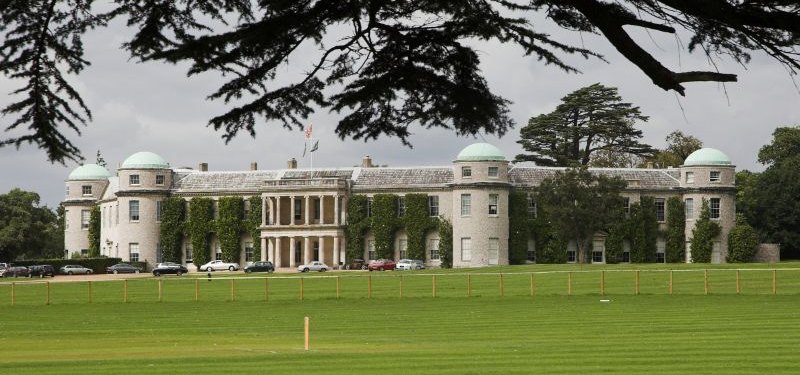


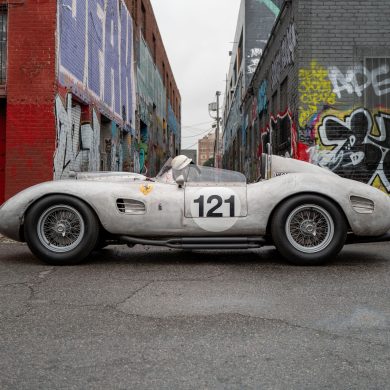
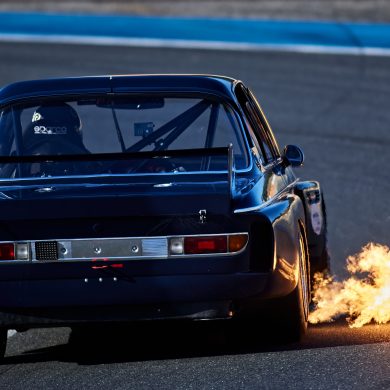
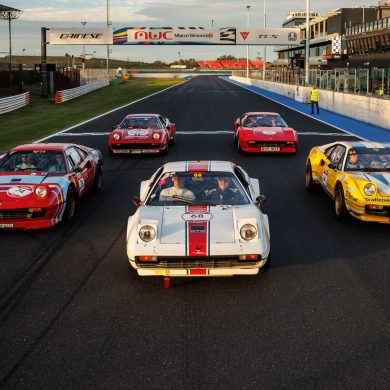
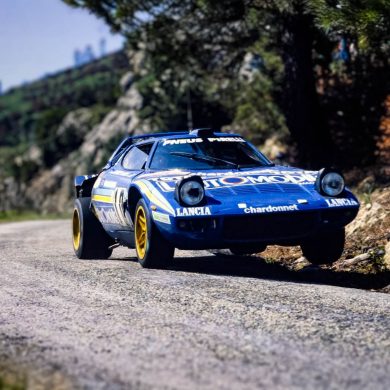


Thank you for a most interesting article. I look forward to Chapter 2.
Suzanne
The Revival has a lot to answer for! Since a friend first took me along five years ago my appreciation of car aesthetics and history has developed along with my desire to own and drive something a bit special. Now a two-seater Merc sits on the driveway, washed/polished and cosseted constantly; a bigger contrast to the family runabout Berlingo couldn’t be imagined. Now I regularly desert my loved-ones for events at Brooklands, Silverstone, Prescott as well as FOS and Revivals not to mention the local Classic Car club meetings. I owe Lord March a debt of gratitude, but I’m not sure my other half does!
Hello Ned
Wonderful to read your article, it stirs my emotions! I was born in the small village of Boxgrove about a mile & half (the way the bird flies) from Goodwood, as a young boy I spent so much time in and around the estate. I go back frequently as my folks live in the area and it is still very near and dear to me, although Canada has been my home for over 30 years I still refer to Goodwood as Gods country! Whilst attending the FOS this year I took my father for a surprise helicopter ride over Goodwood house and surround area up to the top of the downs which is known by the locals as “the trundle” during this ride I took a number of photographs which I am happy to share with you and the readers if you wish, they really do show the beauty of the area. If I can offer any insight to your readers who may be considering the pilgrimage to Goodwood, either the FOS or the Revival please drop me a line.
I would greatly appreciate some insight into the logistics surrounding Goodwood. We plan to go for the first time in 2012 and I want to make sure that we have planned well.
Thank you in advance.
Andrea
Good morning Andrea
A loaded question indeed! Let me begin by asking you a couple of questions for me to better understand your needs & requirements. Do you intend to rent a vehicle whilst you are there? What types of accommodation best suits you? Keeping in mind that hotels chain like we have in N.A are not as plentiful and especially not around that area of Sussex. There will be some brand name hotels, many small private ones, lots of B&B and furnished houses and flats (apartments) to rent. And most importantly you MUST book early to get relatively close to Goodwood (10-12 mile radius)
Regards
R
Hello, Roger!
Can we possibly correspond via e-mail? Mine is attached and I can answer your questions more easily.
I appreciate your time and insights.
Andrea
Great story, brings the goosebumps back. I had the great good fortune to be there in 1998 at the first Revival having abandoned reason for passion. Thanks to American Express and that little green card I made the trip and was rewarded with the experience of a life time. Watching the current Lord March drive his Grandfather’s car around the circuit to start the proceedings exactly 50 years to the minute after the initial event was amazing. The next three days were mind boggling, people and cars from all over the world gathered in one spectacular event, celebrating our mutual love affair with racing and and it’s golden years. Went back a few years later and will go again. With luck, I hope to enter my Lester / Climax coupe which ran at Goodwood in 1956.
Hi Ned
Really enjoyed the article, and look foward too the next instalment. I have attended the Revival 8 out of the last 10 years, as one of the “Tally Ho ” boys. The getting into “costume” being such a unique part of the “show” that we the crowd become part of. It started as a love of the period cars, but now we have become a part of that show with people stopping us all the time to be photographed. May be see you there in 2012.
Adrian Elliot
Tally ho !
Thanks Ned for being my friend. We do love the same things–
1. A good woman
2. Fast friends
3. Fast cars as well
A great article that included the history of Goodwood and practces information.
Yours truly,
Bob